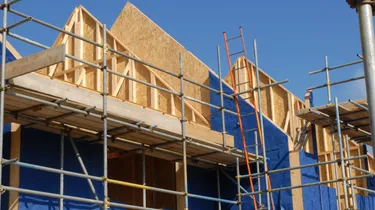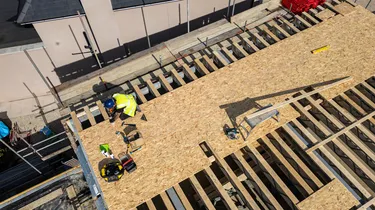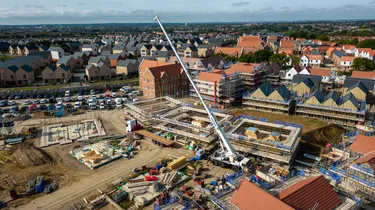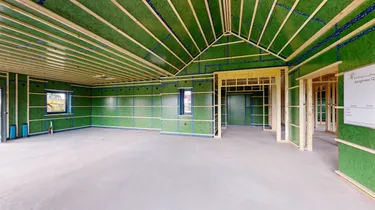
Timber Frame and OSB: A Solution To The Housing Crisis
From structural strength to adaptability and ease of installation, timber frame offers several advantages as an offsite construction method and has a proven track record of providing superior energy efficiency and low embodied carbon emissions. It should also be the first choice for specifiers who prioritise energy efficiency, sustainability and cost.
The use of timber in the construction of future energy efficient homes is set to play a key role in decarbonising construction and has received a boost with the UK government having green lit The Timber in Construction Roadmap. It provides insight into structural timber and advocates the increased use of timber products in the construction of homes. As part of this, timber is an ideal material for building homes to achieve the stringent energy efficiency requirements of Building Regulations Part L and the Future Homes Standard in 2025.
Timber frame manufacturers that can provide high-performance, airtight envelope solutions will be well-positioned to meet these changing regulations and capitalise on the move towards low-energy construction. However, when it comes to offsite construction, it is crucial to select materials for structural timber systems that will deliver the thermally efficient building envelopes that are required.
Pushing the envelope
In order to meet the evolving standards, there is an innovative solution to simplify the path to airtight building envelopes. The increasing demand for double sheathed timber frames in both structural applications and the development of offsite closed panels, led to innovation for producing an airtight OSB/3 panel with airtightness engineered into the panel substrate. The panel can be used as the airtight layer on the warm side of the insulation in timber frame construction systems, helping to create an airtight building envelope.
Each panel features alternating layers of wood strands coated with a high-quality formaldehyde-free resin and wax binder system to deliver outstanding levels of airtightness. A specialist coating is then applied to ensure vapour resistance and provide a premium performance OSB solution for super-insulated and passive buildings and enabling the elimination of a traditional additional vapour control membrane from the construction.
By seamlessly integrating air and vapour barriers into high-performance OSB panels, this streamlines the installation process, minimising the risk of air leakage that often plagues traditional timber frame structures. This cutting-edge solution not only simplifies construction but also ensures a certified, proven approach to creating airtight building envelopes that will pave the way for low-carbon, energy-efficient homes of the future. For timber frame contractors, the use of OSB that features integrated vapour control and air barrier properties is a major step forward. These innovative OSB solutions will enable them to consistently achieve the stringent airtightness levels needed and create airtight, high performance building envelopes that easily surpass the new Future Homes Standard.





